
Roots
Standing at the cusp of modern beauty, one might ask ❉ what truly shapes our understanding of hair, particularly the textured strands that defy simple categorization? The answer, a resonant whisper from ages past, lies within the deep history of ancestral hair care practices. These practices are not mere echoes; they are the very foundation upon which contemporary beauty standards are built, revealing how Heritage continues to sculpt our interactions with hair.
For Black and mixed-race communities, hair has always been more than an adornment. It is a living archive, a narrative spun from generations, a profound connection to lineage and identity. From ancient African societies to the diasporic experiences that followed, hair served as a visual language.
It communicated social status, age, marital standing, tribal affiliation, and even a person’s life journey. This rich cultural heritage offers a lens through which to understand the complex biology of textured hair, recognizing its unique properties not as deviations, but as remarkable adaptations honed over millennia.

Hair Anatomy and Physiology Specific to Textured Hair
The very architecture of textured hair, often characterized by its helical, coiled, or zig-zag patterns, presents distinct physiological considerations. Unlike straight hair, which tends to be more cylindrical in cross-section, textured strands often exhibit an elliptical or flattened shape. This structural difference influences how hair behaves, how it retains moisture, and its inherent strength. Each twist and turn in the hair shaft creates points of vulnerability, where the cuticle, the outermost protective layer, can lift.
This characteristic makes textured hair more susceptible to dryness and breakage, yet also allows for volume and intricate styling possibilities that other hair types cannot replicate. The hair follicle itself, from which the strand emerges, often has a curved path within the scalp, further contributing to the characteristic curl pattern.
Ancestral practices, though lacking modern microscopic tools, intuitively understood these vulnerabilities. They developed regimens that prioritized moisture retention and gentle handling. The use of natural oils, butters, and specific styling techniques aimed to protect the cuticle and minimize external stress, aligning with a deep, intuitive understanding of textured hair’s biological needs. The ancestral knowledge, passed down through generations, effectively predates contemporary scientific validations of hair structure and its care.

Textured Hair Classification Systems
The language we employ to categorize textured hair today, often seen in numerical and letter systems (like 3C, 4A, 4B, 4C), attempts to provide a scientific framework for its diverse patterns. Yet, the roots of classification systems, even those less formalized, reach back into colonial histories. These periods often saw a deliberate miscategorization or devaluation of textured hair, labeling it as “unruly” or “bad.” This historical context is vital when examining how modern beauty standards continue to carry implicit biases.
Understanding hair classifications from a heritage perspective calls for acknowledging the innate beauty and variety of textured hair, rather than viewing any pattern as a deviation from a Eurocentric norm. The inherent range of coils and curls represents a spectrum of biological wonder, each type possessing its unique requirements and beauty.
The intrinsic helical nature of textured hair, shaped by centuries of ancestral wisdom, forms the primary canvas upon which modern beauty standards are painted.

The Essential Lexicon of Textured Hair
Language shapes perception. The terms used to describe textured hair have evolved, some burdened by the weight of historical oppression, others reclaimed as symbols of pride and self-determination. In traditional African societies, specific terminology existed for different styles, signifying meaning and status. For instance, the Mbalantu women of Namibia cultivated ankle-length braids, known as eembuvi, a visual marker of their transition into womanhood, meticulously cared for with a paste of ground tree bark and animal fat.
The word “nappy,” once a derogatory label, has been reappropriated by many people of African descent, transformed into a term of affection and affirmation for natural hair. This linguistic shift reflects a broader reclaiming of identity and a re-evaluation of beauty. Contemporary discourse includes terms such as:
- Coil ❉ A tightly spiraled hair strand, often forming a small, spring-like shape.
- Kink ❉ A sharp, tight curl pattern, frequently found in 4C hair.
- Locs ❉ Hair intentionally matted and intertwined to form rope-like strands, with origins dating back thousands of years.
- Protective Style ❉ A style that tucks away the hair ends to reduce manipulation and breakage, preserving length.

Hair Growth Cycles and Influencing Factors
The journey of each hair strand follows a predictable cycle ❉ anagen (growth), catagen (transition), and telogen (rest). For textured hair, factors such as environmental humidity, manipulation frequency, and nutritional intake play amplified roles due to its structural characteristics. Historical accounts and archaeological findings reveal that ancestral communities understood these influences implicitly. Diets rich in nutrient-dense foods, often plant-based, contributed to internal health, which reflects in healthy hair.
Practices like routine scalp massages, seen in ancient Egyptian rituals using castor and olive oils, stimulated circulation to hair follicles, fostering a conducive environment for growth. Such methods, rooted in generations of observation and practical wisdom, align with current scientific understanding of follicular health and its impact on hair vitality.
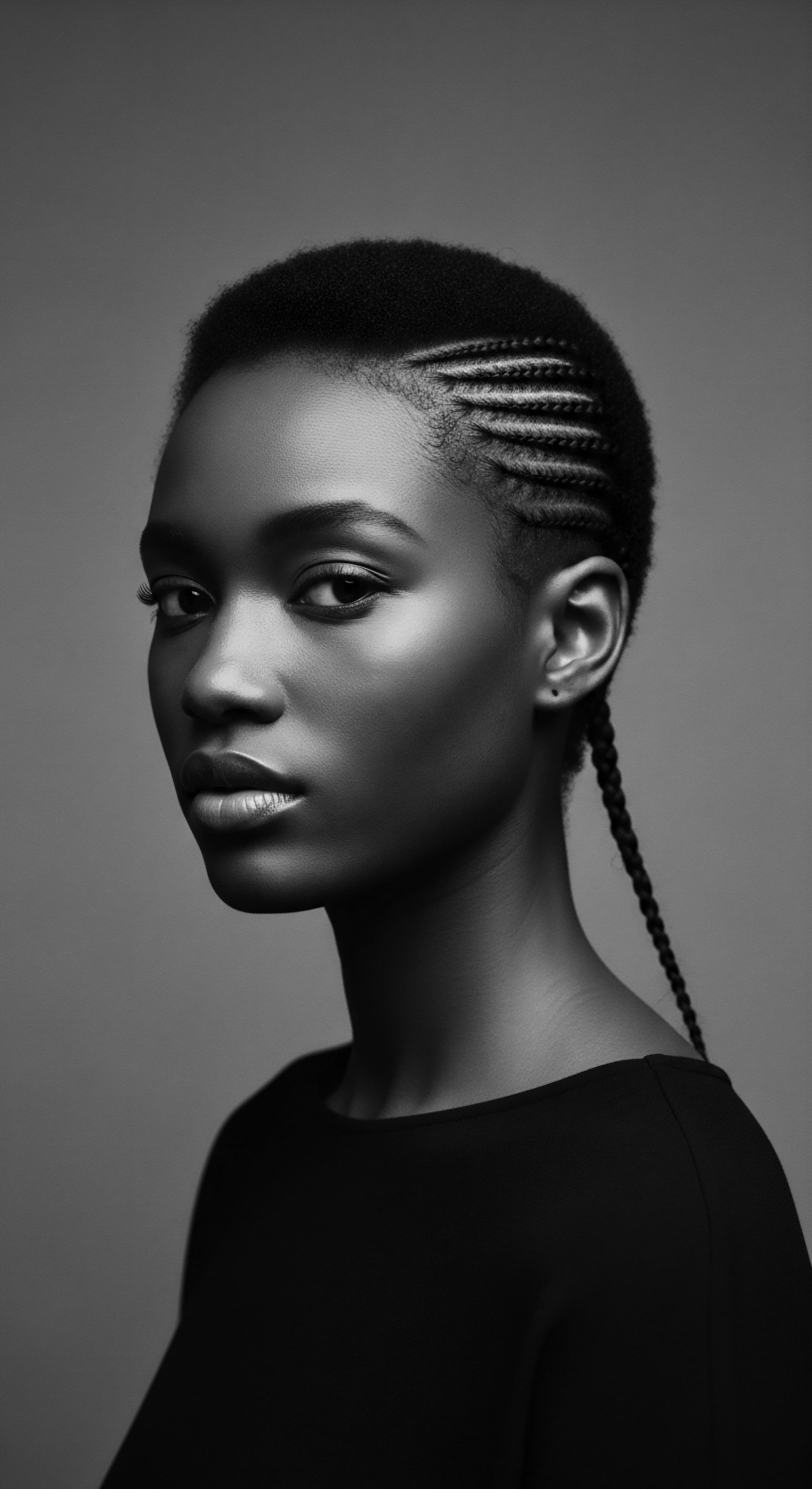
Ritual
The styling of textured hair extends beyond mere aesthetics. It embodies a dynamic interplay between technique, cultural expression, and the practical demands of hair care. Ancestral practices, honed over centuries, laid the groundwork for many contemporary styles and tools, revealing how modern beauty standards are significantly shaped by this shared styling Heritage. These rituals were often communal, fostering bonds and passing down intergenerational knowledge.
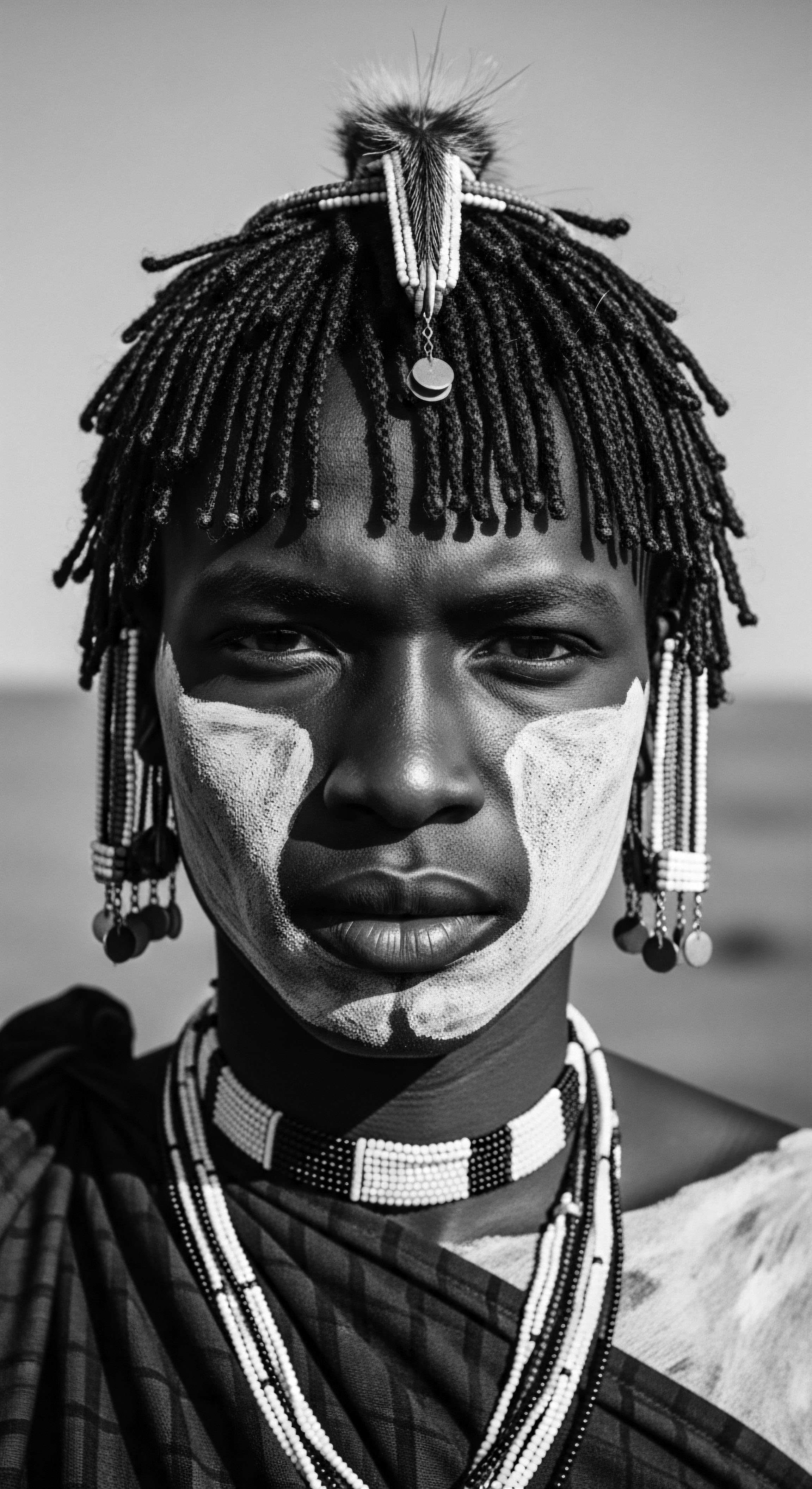
Protective Styling Encyclopedia
Protective styles, which shield textured hair from daily manipulation and environmental stressors, hold deep historical roots across African cultures. Braiding, for instance, dates back thousands of years, with some of the earliest depictions of cornrows found in Saharan rock paintings from 3500 BCE. These styles were not solely ornamental; they served vital purposes. During the transatlantic slave trade, enslaved African women famously braided rice seeds into their hair for survival, and cornrows became clandestine maps for escape routes.
This profound history demonstrates how styles could carry practical, cultural, and political significance. Today, styles like box braids, twists, and cornrows, are direct descendants of these ancient traditions, valued for their ability to promote length retention and minimize breakage. They represent a living testament to ancestral ingenuity.
- Cornrows ❉ Tightly braided to the scalp, patterns could signify tribe, age, or social standing. They also served as a means of communication and survival during enslavement.
- Box Braids ❉ Individual braids sectioned into square or ‘box’ parts. Their origins are in South Africa, dating back to 3500 BCE, often indicating wealth or marital status.
- Bantu Knots ❉ Small, coiled buns formed by twisting hair sections, historically worn by the Zulu tribe of South Africa.

Natural Styling and Definition Techniques
Defining textured curls and coils without relying on heat or harsh chemicals is a hallmark of natural styling, echoing traditional methods that prioritized the hair’s inherent structure. Techniques like finger coiling, twisting, and braiding to set patterns, then allowing hair to air dry, directly mirror ancestral practices of manipulating wet hair with natural emollients. The application of plant-based butters and oils, like shea butter, which has been used in West Africa for millennia to protect hair from harsh climates and provide moisture, played a central role in achieving definition and maintaining health. These methods allowed for the hair’s natural form to be celebrated and enhanced, a stark contrast to later periods that favored chemical straightening.

Wigs and Hair Extensions Mastery
The practice of adorning hair with extensions or wigs is far from a contemporary invention. Ancient Egyptians, for example, wore elaborate wigs for aesthetic, social, and spiritual reasons, using human hair, plant fibers, and even wool. These were often adorned with jewels and perfumes. This long history shows that the desire to alter or enhance one’s appearance through supplemental hair is a cross-cultural human trait.
In modern beauty, wigs and extensions continue to provide versatility and creative expression for textured hair, allowing for diverse styles without permanent manipulation of one’s own strands. The underlying impulse, however, a desire for transformation or status display, remains a potent link to ancient customs.
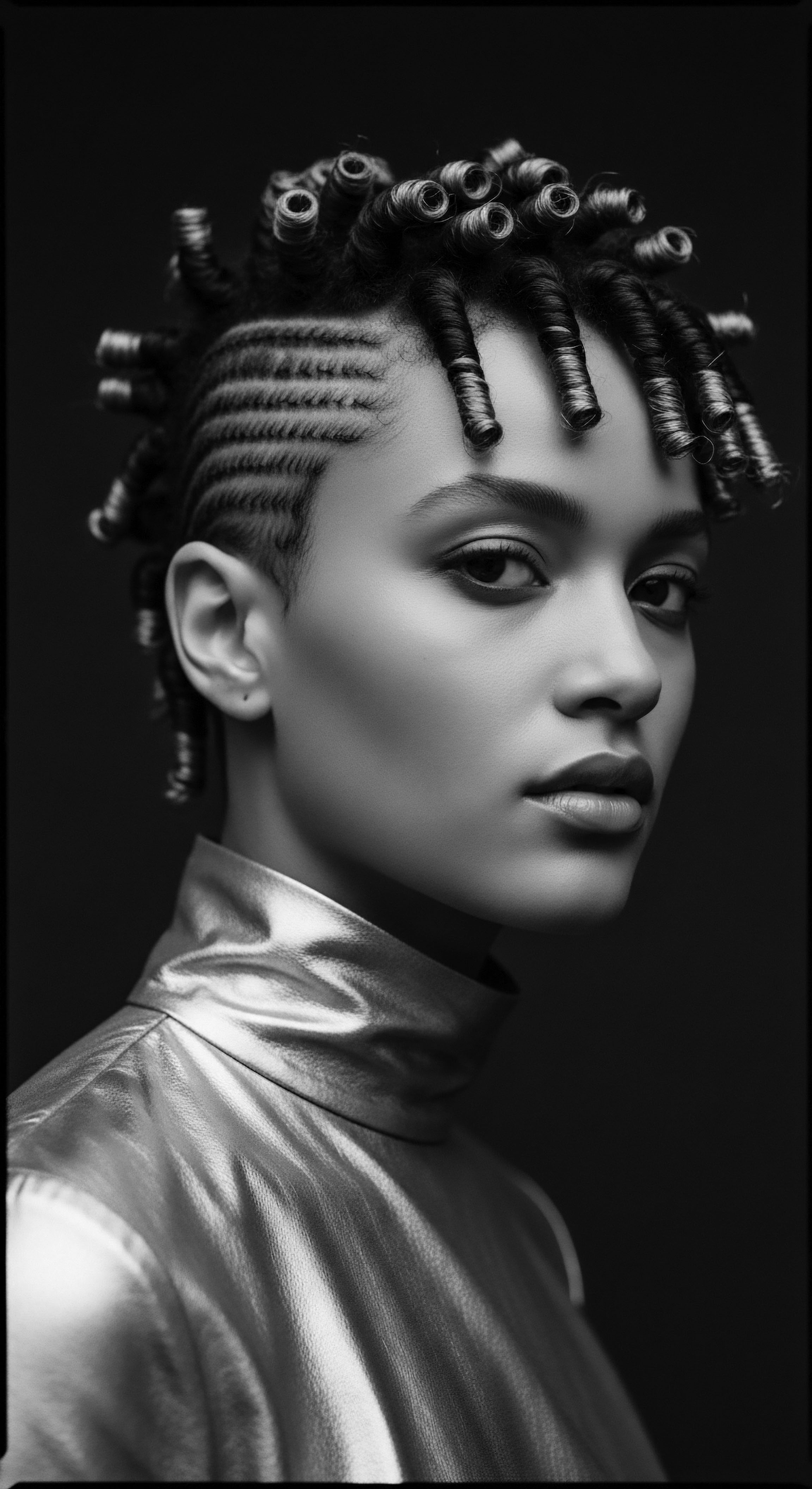
Heat Styling and Thermal Reconditioning
The introduction of heat styling tools, such as hot combs and pressing irons, marks a significant, and often contentious, chapter in the history of textured hair care. While modern thermal reconditioning processes can straighten hair with high heat, the precursor, the hot comb, became prevalent in the late 1800s. It offered a means for Black women to achieve straighter styles, often as a means of assimilation into Eurocentric beauty standards that denigrated natural texture.
This era highlights a period when external pressures dictated how textured hair was perceived and styled. Understanding this history is paramount to recognizing the ongoing societal conversation about hair acceptance and the enduring legacy of beauty standards that privileged certain hair types over others.
The historical journey of textured hair styling, from ancient protective braids to the complexities of thermal modification, speaks to an enduring human desire for expression and adaptation.
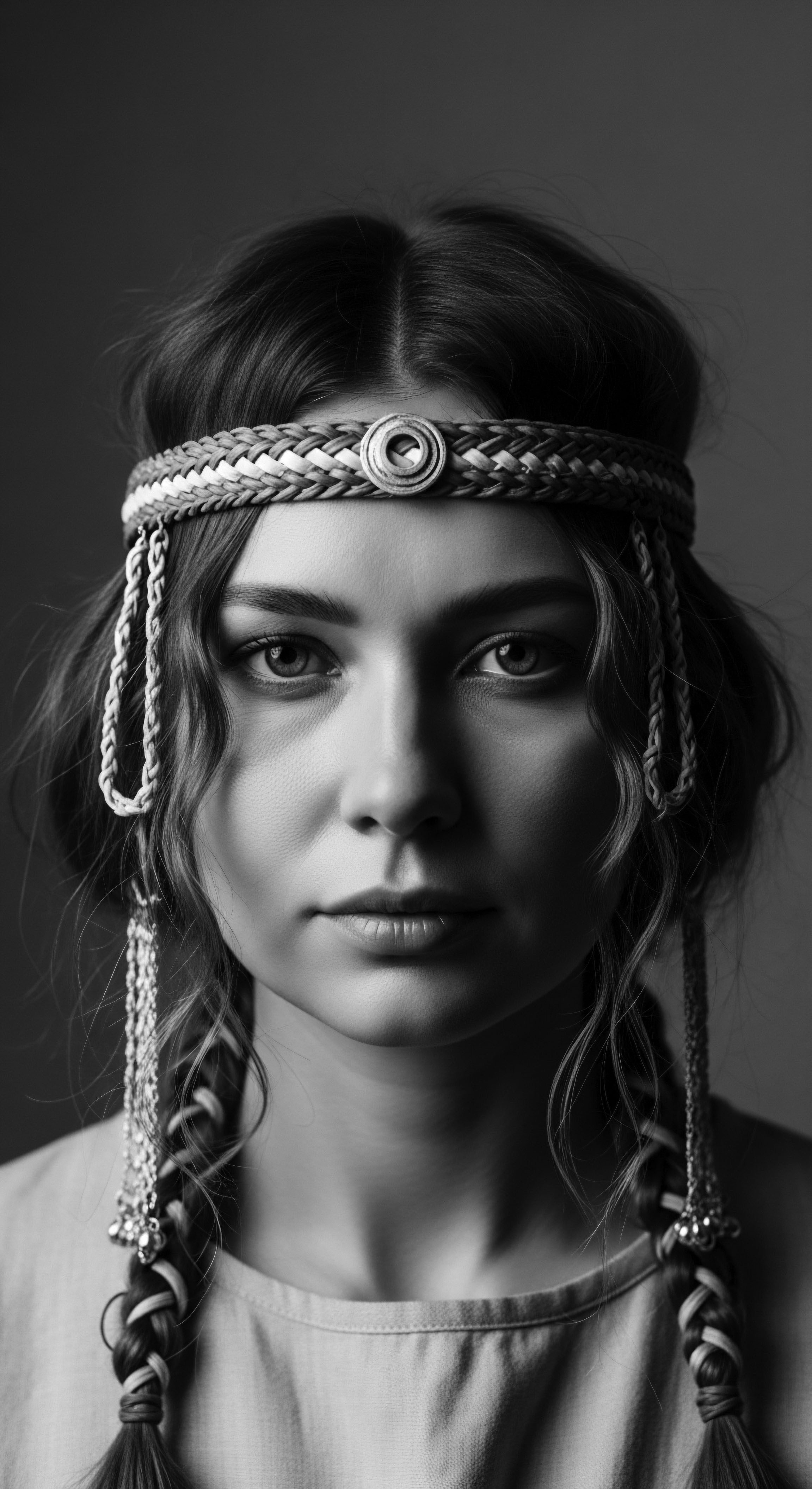
The Complete Textured Hair Toolkit
Just as techniques have evolved, so too have the tools used for textured hair care. Ancestral communities utilized natural materials for combs, picks, and styling implements. Combs made from wood or ivory, and even fish bones, were employed by ancient Egyptians for detangling and distributing oils. These tools, simple in their construction, were designed with an understanding of textured hair’s delicate nature, prioritizing gentle manipulation.
The modern toolkit for textured hair includes a variety of combs, brushes, and styling instruments, many of which echo these ancient designs in their wider teeth or smooth surfaces, aimed at minimizing breakage. The evolution of tools reflects an ongoing commitment to understanding and caring for textured strands effectively.
| Traditional Tool Wide-tooth combs (wood/bone) |
| Ancestral Context Ancient Egypt, various African societies for gentle detangling and oil distribution. |
| Modern Parallel/Influence Essential for detangling wet textured hair, reducing breakage. |
| Traditional Tool Fingers and natural oils |
| Ancestral Context Pre-colonial Africa, for styling, separating, and moisturizing. |
| Modern Parallel/Influence Finger coiling, sectioning, and product application for curl definition. |
| Traditional Tool Clay/mud mixtures |
| Ancestral Context Himba people for protective coatings; ancient Egyptians for cleansing. |
| Modern Parallel/Influence Clay washes and hair masks for clarifying and conditioning. |
| Traditional Tool These tools, both ancient and contemporary, underscore a consistent human effort to nurture and adorn textured hair. |
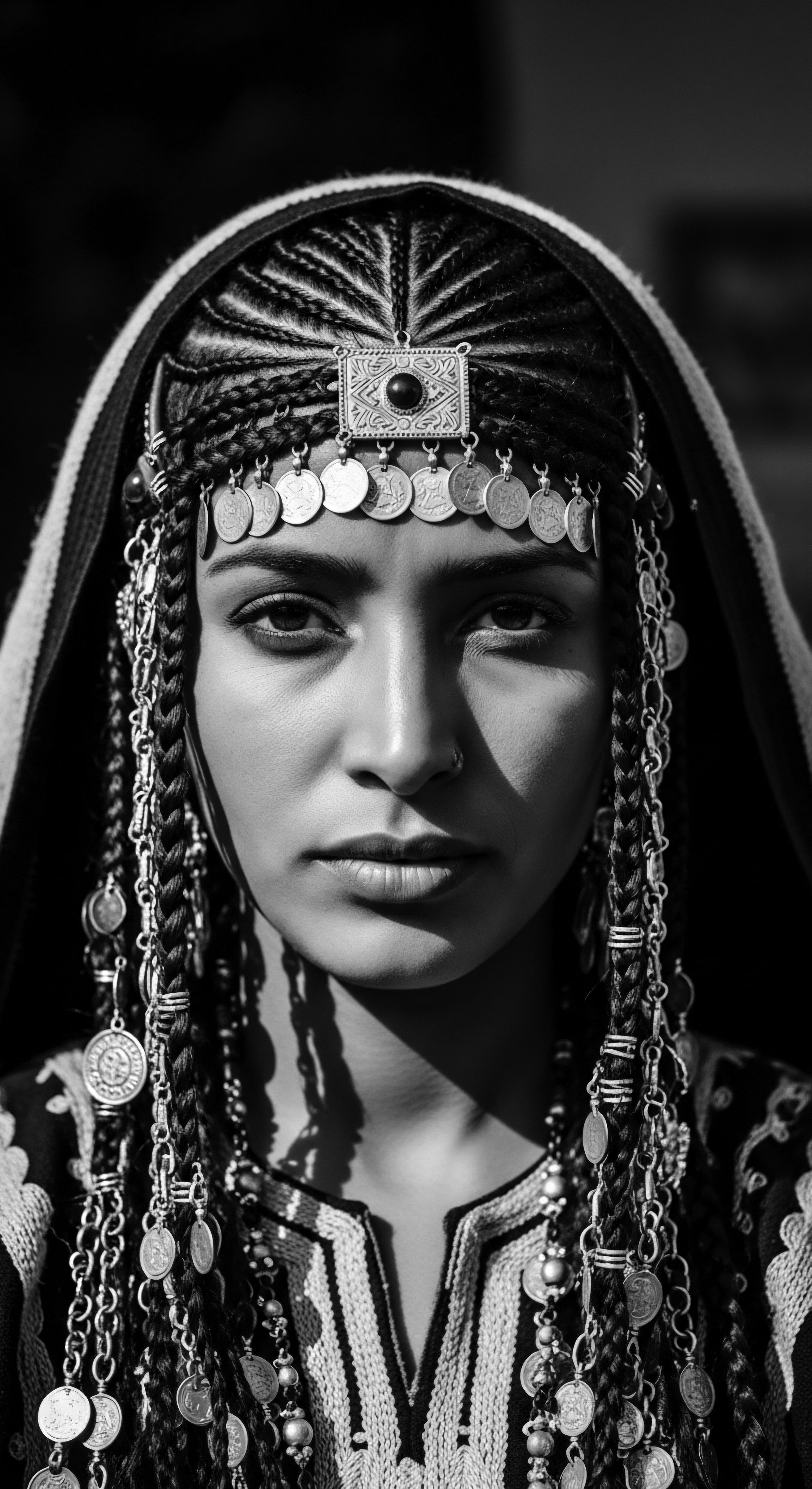
Relay
The wisdom embedded in ancestral hair care practices extends into a holistic understanding of well-being, informing contemporary regimens and problem-solving. This knowledge, passed down through generations, underscores how modern care for textured hair is deeply rooted in a cherished Heritage, connecting inner health with outward radiance.

Building Personalized Textured Hair Regimens
The concept of a personalized hair regimen, tailored to individual needs, finds its genesis in ancestral wisdom. There was no one-size-fits-all approach in traditional societies; instead, care was adapted based on age, marital status, climate, and available resources. A mother teaching her daughter how to braid or prepare a particular hair mask, as was common in many African communities, represented a transfer of living knowledge, allowing for adaptation and individualization.
Today, the natural hair movement emphasizes understanding one’s own hair type and needs, building routines that often cycle through cleansing, conditioning, and moisturizing, sometimes inspired by the traditional multi-step processes of washing, oiling, and styling. This mirrors the adaptive spirit of our forebears, who intuitively understood how to balance the elements for hair vitality.
How do ancestral methods inspire contemporary routine development?
Ancient practices often involved elaborate, time-consuming rituals that fostered patience and deep engagement with hair care. For example, the Mbalantu women’s years-long process of cultivating their long braids for initiation into womanhood speaks to a commitment to hair as a sacred aspect of self. This dedication offers a stark contrast to modern desires for instant gratification, inviting us to slow down and rediscover the contemplative aspect of hair care.
The ancestral emphasis on scalp health, through consistent oiling and massaging, also stands as a guide. This ancient focus on the scalp as the source of healthy hair growth, using ingredients such as castor oil and pomegranate oil in ancient Egypt, is now supported by scientific understanding of the hair follicle’s crucial role.

The Nighttime Sanctuary Essential Sleep Protection and Bonnet Wisdom
The practice of protecting hair at night, now commonly achieved with satin or silk bonnets and scarves, carries profound historical and cultural weight for Black women. While bonnets existed in European fashion, their meaning and evolution for Black women are distinct. During enslavement, headwraps and bonnets were weaponized, used to visibly distinguish enslaved Black women, sometimes even mandated by laws. However, in a powerful act of resistance and cultural preservation, Black women transformed these coverings into symbols of identity, artistry, and self-care.
They used elaborate fabrics, decorated them, and passed down the practice as a means of protecting their hair and maintaining connection to their heritage. The modern bonnet, beyond its practical benefit of reducing friction and moisture loss, stands as a quiet yet potent symbol of this resilient legacy, a nightly ritual that connects one to a continuum of care and defiance.
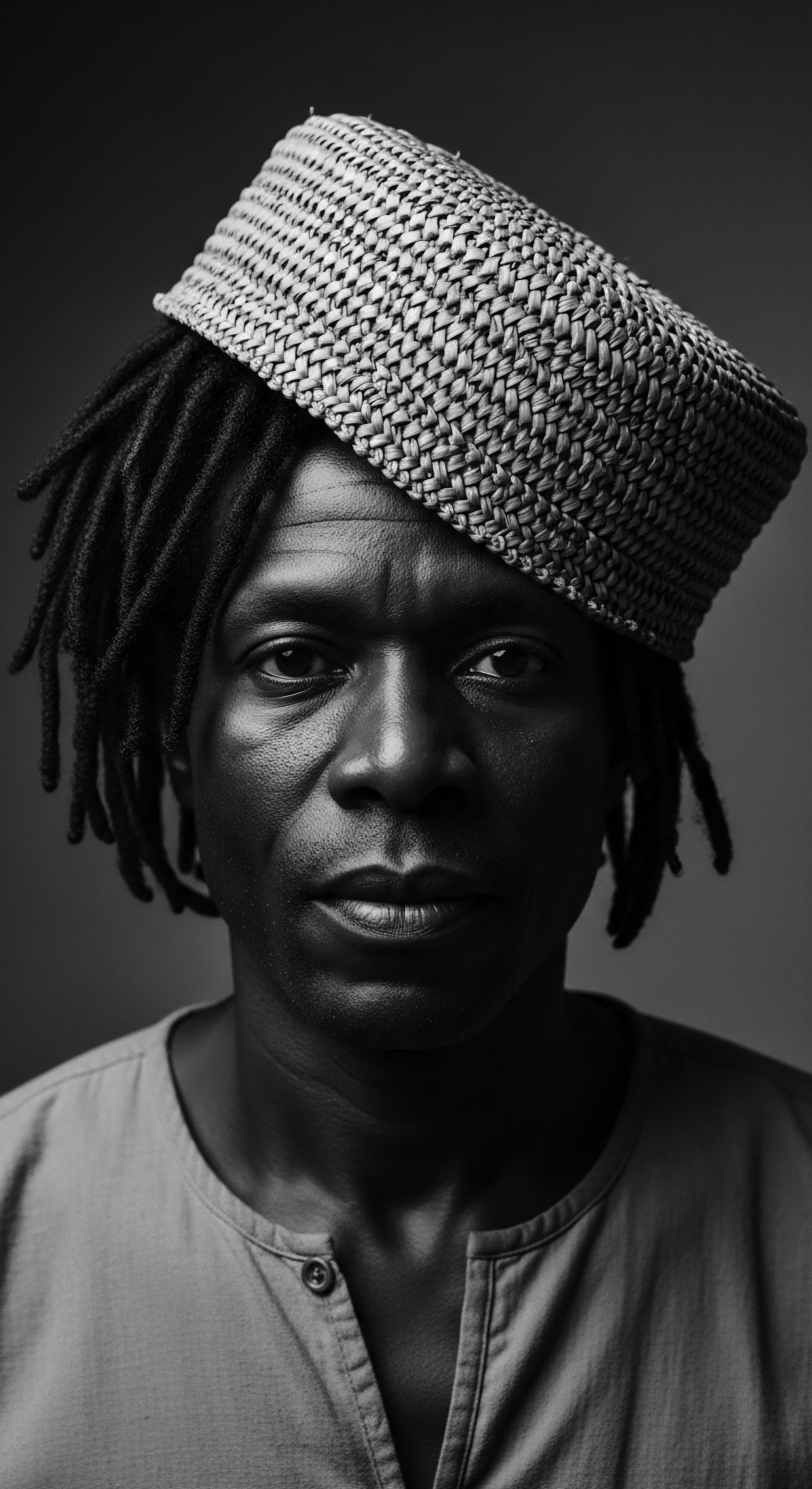
Ingredient Deep Dives for Textured Hair Needs
Many of the most celebrated natural ingredients in modern textured hair care boast ancient pedigrees. These substances, used for centuries by diverse ancestral communities, offer tangible links to the efficacy of traditional wellness. Consider the profound impact of:
- Shea Butter ❉ Originating from the Vitellaria paradoxa tree in West Africa, shea butter has been used for millennia for its moisturizing, protective, and healing properties. It forms a protective barrier, making it exceptional for dry or damaged textured hair.
- Moringa Oil ❉ Extracted from the ‘miracle tree,’ Moringa oleifera, this oil has been used for centuries in traditional medicine and cosmetics across India and Africa. It is celebrated for its hydrating, fortifying, and protective qualities, supporting scalp health and hair strength.
- Castor Oil ❉ A staple in ancient Egyptian hair care, this thick oil was used to condition, strengthen, and promote growth. Its continued popularity attests to its enduring benefits for scalp and strands.
These examples illustrate how ancestral knowledge of botanicals provides a powerful foundation for modern formulations. Scientific inquiry today often validates the very properties that our ancestors discovered through generations of empirical observation.
Ancestral traditions offer a vibrant blueprint for contemporary hair care, reminding us that holistic well-being and natural ingredients are timeless assets for textured hair.

Textured Hair Problem Solving Compendium
The challenges often faced by textured hair – dryness, breakage, tangles, scalp irritation – are not new. Ancestral communities developed effective, though sometimes labor-intensive, solutions. Detangling was a patient, often communal activity, using wide-toothed implements and lubricating agents. Scalp health was maintained through consistent cleansing rituals, sometimes using clays or plant infusions, followed by moisturizing applications.
The wisdom of these practices lies in their preventative nature and their reliance on readily available natural resources. Modern solutions for textured hair often mirror these approaches, emphasizing moisture balance, low-manipulation styles, and a focus on scalp health, albeit with a wider array of scientifically formulated products. This continuum of problem-solving methods speaks to the enduring nature of textured hair’s unique needs and the persistent human drive to meet them.
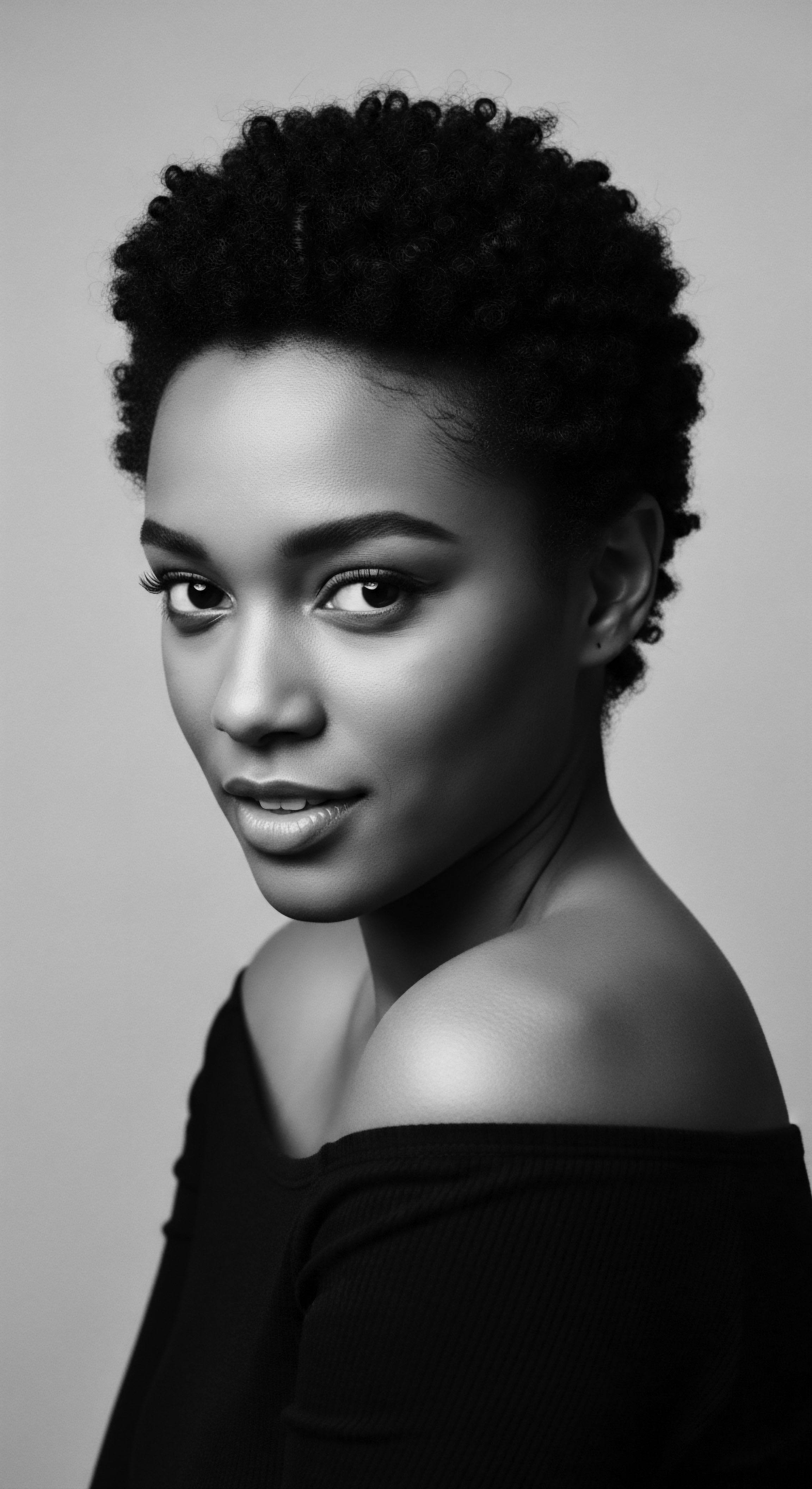
Holistic Influences on Hair Health
Ancestral wellness philosophies rarely separated physical appearance from overall well-being. Hair health was understood as a reflection of inner vitality, influenced by diet, stress levels, and spiritual harmony. Communities often practiced hair care as a social bonding activity, reinforcing communal ties and reducing individual burdens. The shared experience, the stories exchanged during braiding sessions, contributed to mental and emotional well-being, which in turn supported physical health.
Today, the growing emphasis on holistic wellness within the beauty industry – mindfulness, stress reduction, and nutrient-rich diets – echoes these ancient perspectives. It speaks to a rekindled understanding that true radiance of hair stems not only from external applications but from a deeply rooted sense of self and connection to one’s heritage.

Relay
The profound and lasting impact of ancestral hair care practices is undeniably evident in the landscape of modern beauty standards, particularly for textured hair. This influence is not a simple inheritance; it is a complex, active dialogue between the deep past and the evolving present, often shaped by social movements and scientific discovery. Exploring this dynamic requires a careful examination of cultural persistence, reclamation, and the ongoing redefinition of beauty, all viewed through the profound lens of Heritage.
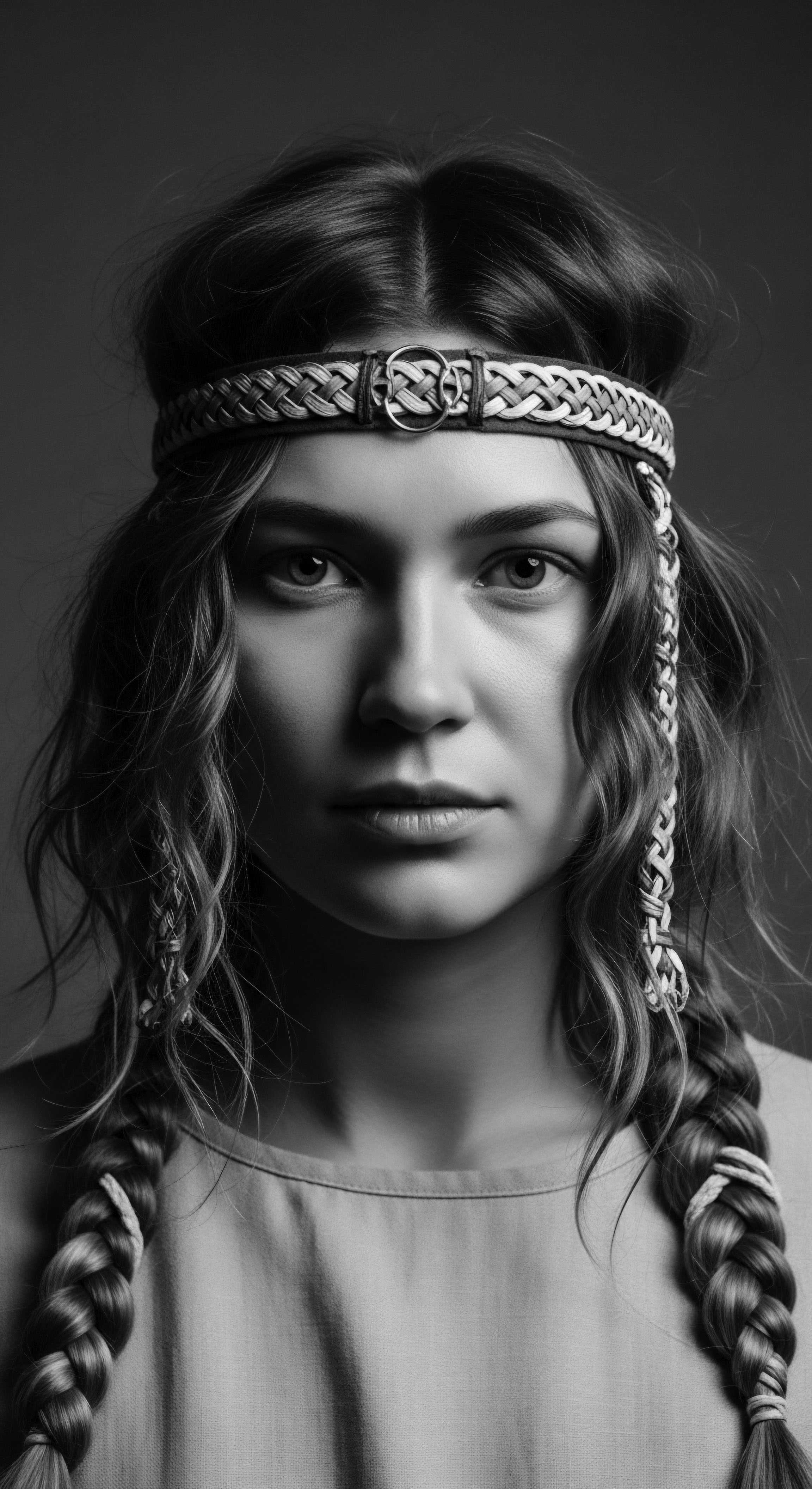
Redefining Beauty Through Ancestral Narratives
For centuries, the narrative surrounding textured hair was often one of derogation, heavily influenced by colonial powers that sought to impose Eurocentric beauty ideals. This historical oppression led to the widespread adoption of chemical straighteners and pressing combs, tools that allowed for assimilation into a narrow societal definition of beauty. However, the innate resilience of textured hair, paired with a powerful yearning for self-affirmation, ignited movements of reclamation. The ‘Black is Beautiful’ movement of the 1960s and 70s, for example, saw a resurgence of natural hairstyles like the Afro, which became a potent symbol of Black pride and resistance against discrimination.
This period marked a profound shift, demonstrating how cultural and political tides can redefine beauty, moving away from imposed norms toward an celebration of ancestral aesthetics. The very existence of this movement, and its continued waves into the 21st century, proves that ancestral forms and expressions of beauty hold an enduring power.

What Role Did Ancestral Hair Practices Play in Resistance?
Ancestral hair practices, particularly braiding, often served as acts of profound resistance during periods of immense oppression. Beyond survival, as seen with rice seeds in braids, these intricate styles functioned as a non-verbal language and a means of cultural preservation. Enslaved people, forbidden from reading or writing, braided maps to freedom and conveyed coded messages through specific patterns, using their hair as a medium for communication and defiance. This historical example, cited in studies on the transatlantic slave trade, highlights the depth of knowledge and strategic thinking embedded within these traditional practices.
(Tharps & Byrd, 2001) The deliberate act of maintaining intricate, ancestral styles in the face of forced assimilation was a powerful assertion of identity and a direct challenge to dehumanization. This ongoing legacy of resistance echoes in today’s natural hair movement, where wearing textured hair in its unmanipulated state continues to be a statement of pride and autonomy.

Scientific Validation of Traditional Ingredients
Modern science frequently lends its validation to the efficacy of natural ingredients long employed in ancestral hair care. For instance, the traditional use of Shea Butter across West Africa for its moisturizing and healing properties is now understood through its rich composition of fatty acids and vitamins A and E, which provide deep hydration and assist in skin and hair health. Similarly, Moringa Oil, revered in various ancestral traditions, is recognized by contemporary research for its potent antioxidants and essential nutrients that nourish the scalp and strengthen hair. This scientific affirmation of ancient remedies reinforces the profound practical knowledge held by our ancestors.
It bridges the gap between empirical wisdom, accumulated over generations, and modern biochemical understanding, underscoring the enduring value of this heritage. This confluence of historical use and current research provides compelling evidence of the sophistication inherent in traditional practices.

The Living Library of Textured Hair Heritage
The impact of ancestral practices is evident in the ongoing efforts to preserve and share the rich heritage of textured hair. Online platforms, community gatherings, and educational initiatives function as living libraries, archiving traditional techniques, celebrating diverse styles, and sharing intergenerational wisdom. This contemporary engagement ensures that the knowledge of ancient methods, passed down verbally and through demonstration, continues to thrive. Discussions around styling techniques, ingredient benefits, and cultural significance contribute to a collective understanding that honors the past while innovating for the future.
The increasing demand for products tailored to textured hair, often featuring traditionally used ingredients, signals a broad societal shift toward valuing and understanding this unique hair type. This reflects a continued relay of ancestral wisdom into modern commercial and cultural spheres, emphasizing that heritage is not static, but a dynamic, unfolding story.
| Aspect Styling Purpose |
| Ancestral Practice (Heritage Lens) Social status, tribal identity, age, marital status, spiritual connection, resistance. |
| Modern Standard/Influence Fashion, personal expression, professional acceptance, protective styling. |
| Aspect Key Ingredients |
| Ancestral Practice (Heritage Lens) Shea butter, moringa oil, castor oil, plant extracts, clays, honey, animal fats. |
| Modern Standard/Influence Natural oils, botanical extracts, humectants, protein treatments; often scientifically isolated compounds. |
| Aspect Care Approach |
| Ancestral Practice (Heritage Lens) Communal rituals, long-term cultivation, holistic well-being, patience. |
| Modern Standard/Influence Individualized regimens, specialized product lines, focus on efficiency, scientific understanding of hair structure. |
| Aspect The enduring influence of ancestral practices highlights a consistent reverence for hair’s multifaceted significance across time. |
What cultural biases still impact textured hair in beauty standards?
Despite progress, historical biases persist, often subtly shaping beauty standards in professional and social settings. The legacy of colonialism, which categorized Afro-textured hair as “unprofessional” or “unacceptable,” continues to affect perceptions and opportunities. Instances of hair discrimination, such as the “comb test” or “pencil test” used historically to enforce Eurocentric norms, show how hair texture was, and sometimes still is, used as a basis for discrimination. The ongoing legal efforts, such as the CROWN Act legislation in the United States, aim to protect individuals from discrimination based on natural hair and hairstyles.
This legislative recognition underscores the fact that ancestral hair practices, and the modern styles derived from them, still confront systemic biases within dominant beauty standards. The fight for true acceptance requires an ongoing confrontation with these deeply embedded historical prejudices.
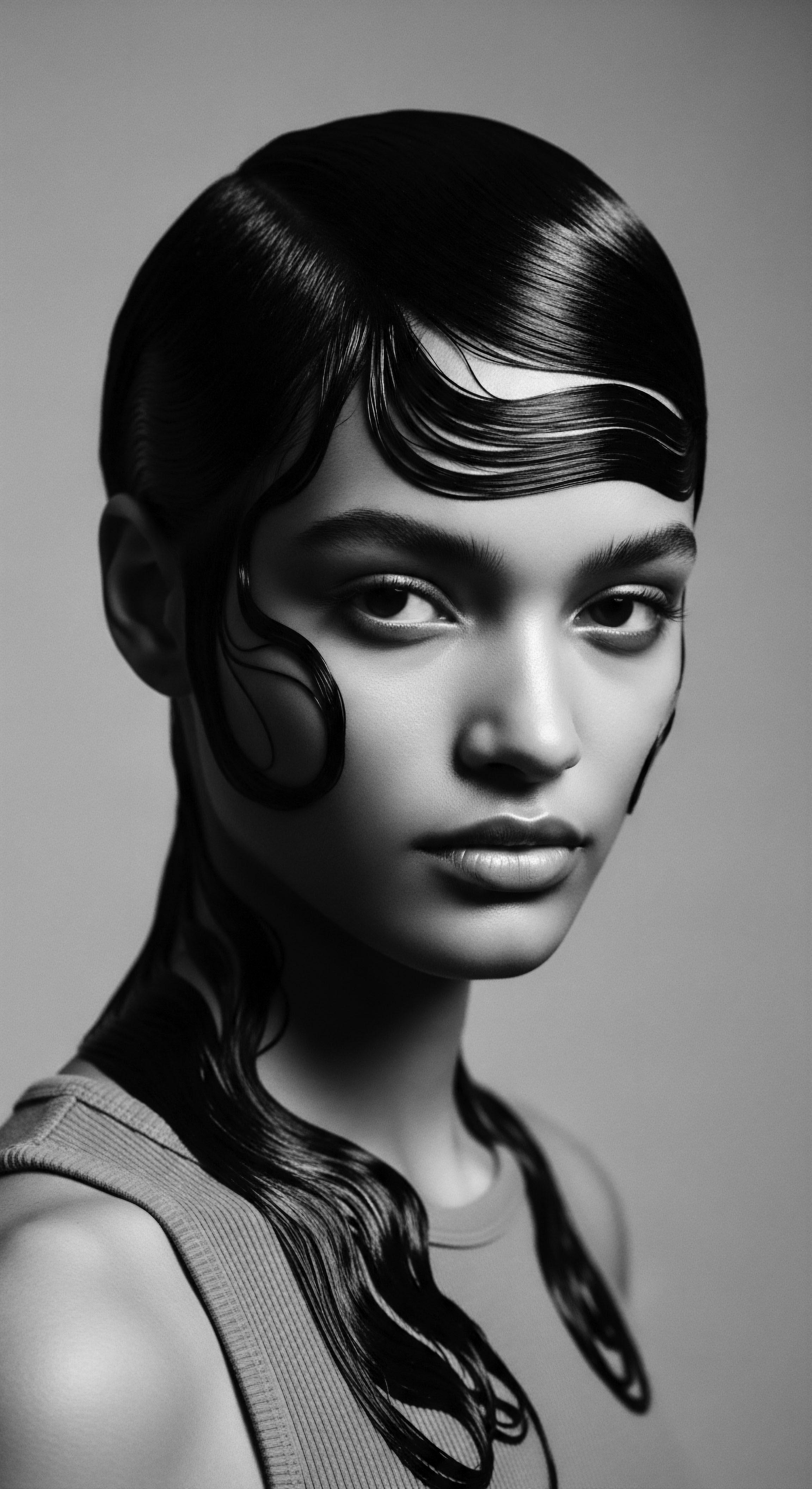
Reflection
The journey through ancestral hair care practices reveals a profound truth ❉ our hair, especially textured hair, carries within its very coils the echoes of generations. It is a living, breathing archive of resilience, artistry, and wisdom. From the earliest communal braiding rituals that cemented social bonds and conveyed identity, to the ingenious use of earth’s bounty for nourishment and protection, our forebears laid down a rich legacy. This heritage is not a static relic of the past; it is an active, vibrant force shaping our present understanding of beauty.
The “Soul of a Strand” truly resides in this continuous thread of wisdom, spanning elemental biology, compassionate care, and profound self-expression. Each strand of textured hair tells a story, a testament to enduring strength and an unbroken connection to ancestral roots. As we move forward, a deeper appreciation for these historical practices allows for a more authentic and celebratory approach to beauty, one that honors the unique lineage of every coil and kink, ensuring the past continues to inform a truly radiant future.
References
- Tharps, L. L. & Byrd, A. D. (2001). Hair Story ❉ Untangling the Roots of Black Hair in America. St. Martin’s Press.
- Banks, I. (2000). Hair Matters ❉ Beauty, Power, and Black Women’s Consciousness. New York University Press.
- Sherrow, V. (2006). Encyclopedia of Hair ❉ A Cultural History. Greenwood Press.
- Hooks, B. (1995). Art, Bell Hooks, Identity and Community ❉ Culture Wars. South End Press.
- Mboukou, J. (2014). African Hair Braiding ❉ A Cultural and Historical Perspective.
- Akerele, O. (1993). Shea Butter ❉ A Multi-Purpose Wonder. Food and Agriculture Organization of the United Nations.
- Dabiri, E. (2020). Twisted ❉ The Tangled History of Black Hair Culture. Harper Perennial.
- Adepeju, O. (2018). The Significance of Hair in African Culture.
- Stewart, D. (2007). African Dress in the Americas. Chelsea House Publishers.
- Walker, A. (2017). The Natural Hair Handbook ❉ A Guide for Women with Textured Hair.
